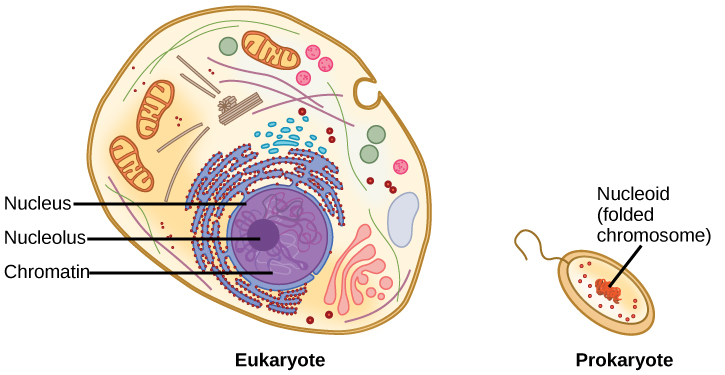The cell theory is a universally accepted principle of biology that sets the relationships between cell and livings things. The cell theory is composed of three basic principles that were established by three 19th-century German scientists – Matthias Schleiden, Theodor Schwann and Rudolph Virchow.
The first principle of the cell theory is that all life is made of cells. All living organisms in the six kingdoms of life are made of cells. However, not all cells are alike. There are two categories of cells - prokaryotic and eukaryotic. Prokaryotic cells are simpler and lack a membrane-bound nucleus. In contrast, eukaryotes are larger and highly complex with a defined nucleus and several membrane-bound organelles.
The second principle of the cell theory is that the cell is the basic unit of life. Some simpler organisms may by unicellular, meaning they only have one cell. However, these unicellular organisms still have remarkably complex structures – inside each cell are atoms that bond to form molecules, which compose the organelles. Other multicellular organisms are made of many cells. In multicellular organisms, the basic hierarchical structure of an organism starts with the cell. Groups of cells performing similar functions form tissues, which then form organs. A group of organs, known as an organ system, work together to perform a function. An organism is made of several organ systems that help carry out vital life functions.
The third principle of the cell theory is that all cells come from preexisting cells. In prokaryotic cells, binary fission is the asexual form of reproduction. In this process, the cell duplicates its genetic material and pinches its cell membrane inwards to form two cells. Eukaryotic cells reproduce through a sequence of complex steps known as the cell cycle. In this process, the cell prepares for division during interphase and splits during mitosis or meiosis, depending on the chromosome number.
Now think about this – if all cells come from preexisting cells, then where did the first cell come from?
________
Image Credit:
(1) “Eukaryote and Prokaryote .” Wikimedia Commons, 27 May 2016, upload.wikimedia.org/wikipedia/commons/4/45/Figure_14_02_06_new.jpg.

Comments
Post a Comment